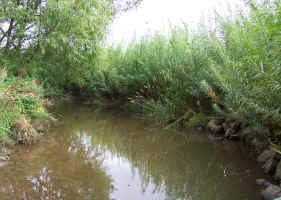
Willow spiling is a soft engineering technique most commonly used for combating riverbank erosion and creating revetments. Spiling is an old process that has been used for centuries to stabilise and control watercourses and to create docks, landings and moorings. There is archaeological evidence of spiling on the banks of the river Thames in London dating back to Roman times. This practise is undergoing a huge revival as hard engineering solutions are not only considered to be out-of-place in many situations from a visual and environmental point of view but as it becomes obvious the concrete type methods can only be considered temporary and carry the risk of pollution.

In simple terms branches, stems or rods of willow are used to form a woven wall where there is a need for a stable bank to a watercourse. This is done by driving live willow uprights or stakes (think of them as large-scale hard wood cuttings) into the riverbed. Then smaller diameter pliable willow rods or ‘strands’ are woven between these in classical basket weave fashion. This structure can be as high or as long as is necessary. Behind this ‘wall’ soil is backfilled to create a solid organic bank. Faggots (tied bundles) of twiggy willow material can be laid directly behind the willow wall to prevent the soil filling being washed out. But willow roots will tightly bind this bank as not only will the stakes take root but most of the weaving material will also root where it has contact with the soil. This makes for a very resilient, natural, attractive, living structure to repair or prevent erosion it also provides homes and shelter for wildlife. The resulting top growth can be trimmed or cut back as necessary if not browsed by livestock.
Here are a few photos of a series of small repairs we installed to protect and repair some fast flowing upland riverbanks using a spiling technique. Click on the pictures for an enlarged view.
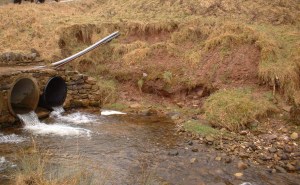
Site a. before.
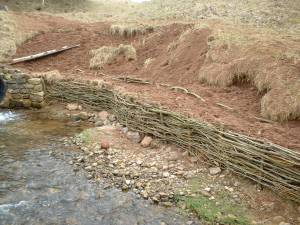
Site a. during the installation
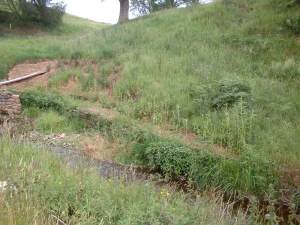
Site a. A few weeks later
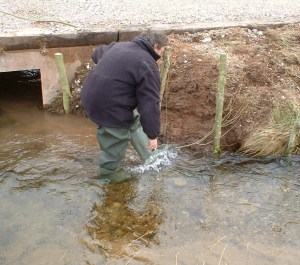
It can be cold, wet work!
We were keen and indeed able to use only material growing on the estate using thinnings and coppice produce from the few semi mature windbreak and amenity plantings on the site. Although this meant using some fairly chunky and misshapen plant material, sometimes less than ideal from an aesthetic point of view, it was felt the positives, in terms of monetary and carbon expense, out weighed any negatives and gave the project real integrity.

Site b. Before
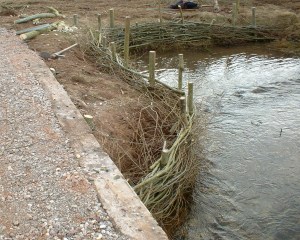
Site b. during the installation
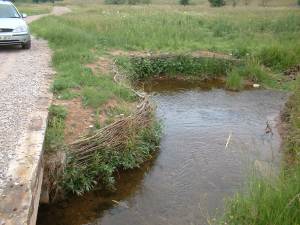
Site b. After a few weeks

Site c. Before

Site b. During, note the bundles of faggots behind the woven wall
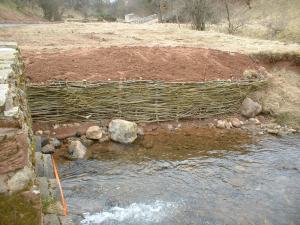
Site c. Now back filled with soil
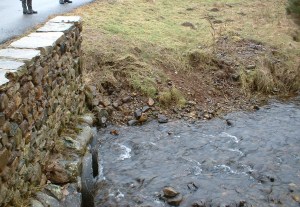
Site d. before

Site d. installed

Site d. A few weeks later the Willow is rooting and shooting
This technique can be used to retain ground, create hedges or boundaries in almost any garden situation of course!
Pingback: Transduction — leading transformation — Issue #124 – chosen path
This is perfect for a small property I have where the old cane spillway is eroding!